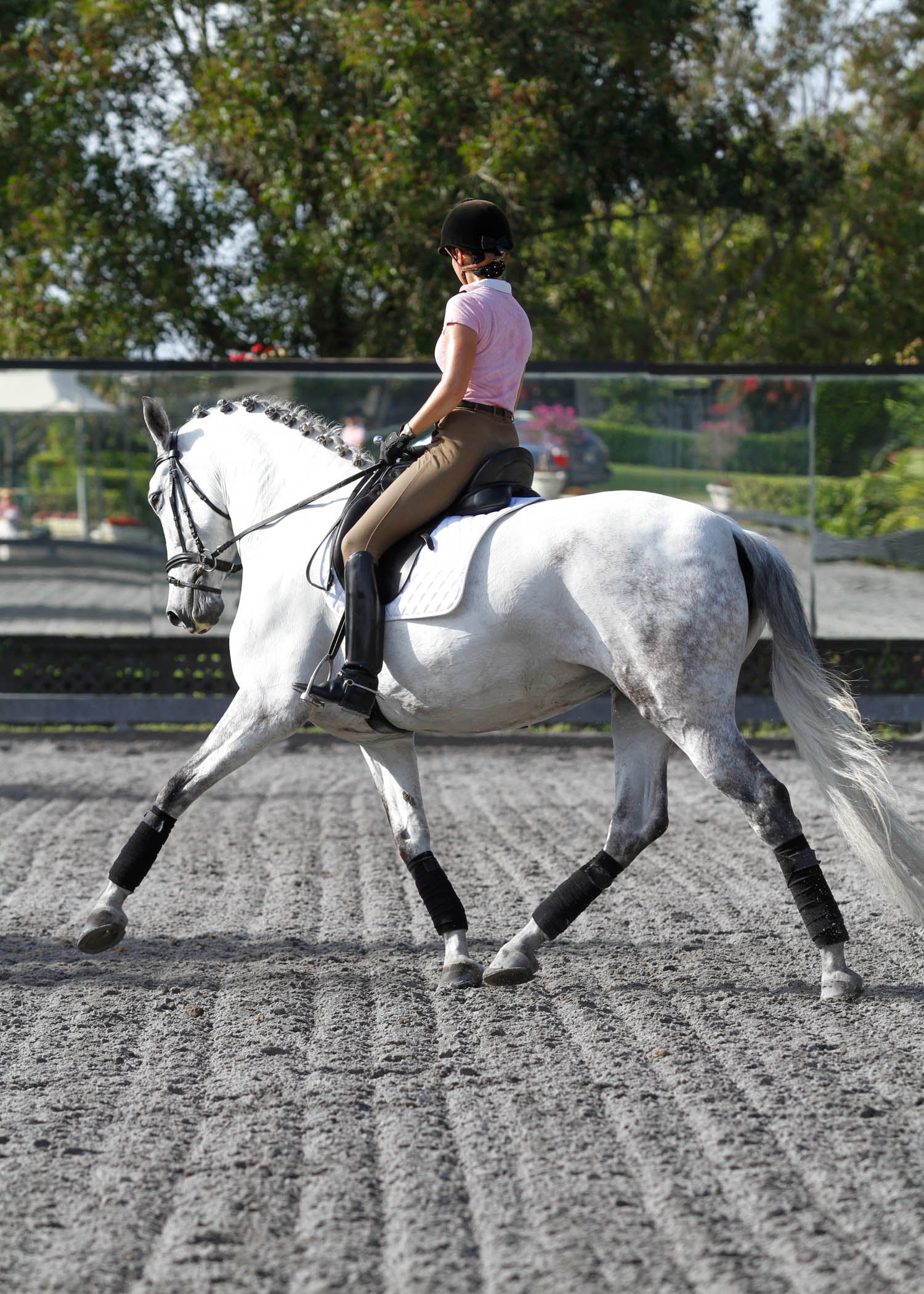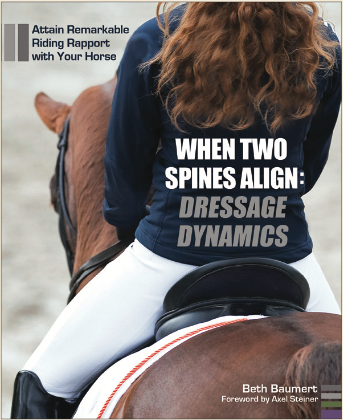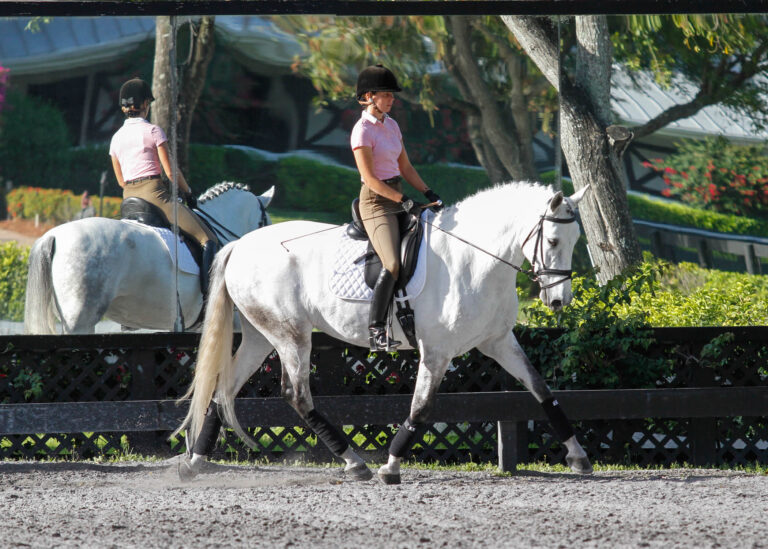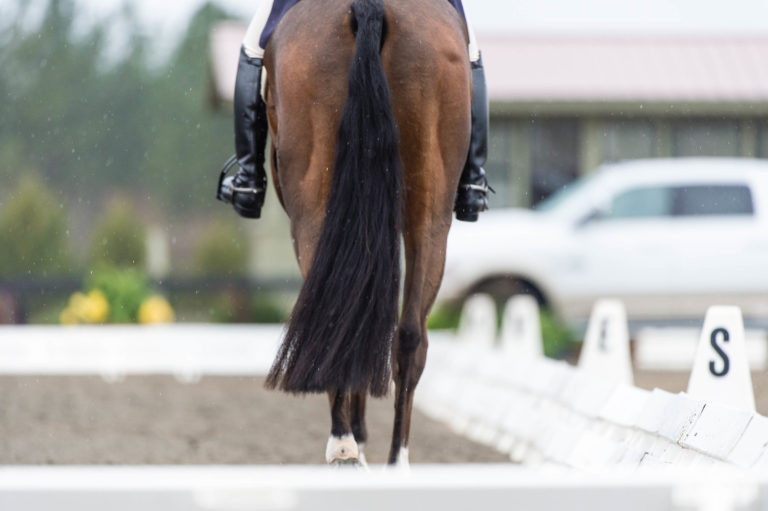Everyone knows how important it is to balance the horse on the outside rein, but very few riders are persistent enough about it to actually achieve the goal of “throughness.”
If you don’t have a dressage arena, map out a 20-meter circle in your riding area. Although it’s not important that the circle be exactly 20 meters, it is important that it be an exact circle because you want every stride to be the same. Find the center of your circle, and pace off 10 giant steps in four opposing directions. Mark these points with cones. This gives you an exact circular pathway that gives your horse a cylindrical shape to his body that balances him on the outside rein.

Step 1: Point your horse’s nose exactly on the line of travel. Then, with your seat and legs, shape your horse’s body like a banana on the arc of your circle. Do a working trot three-quarters of the way around, then walk one-quarter. Repeat while you help your horse find a consistent, balanced rhythm and frame in shoulder-fore. Try to keep the same feel in your hand. To ask for walk, keep your hands steady and push quietly against them. Your horse should keep reaching for the hand that stays forward. That will cause him to close his frame a little from behind while keeping the neck long.
Step 2: When he’s balanced under your seat, where two spines meet, he’ll feel nice in the hand. Repeat the exercise in the other direction: Trot three-quarters and walk one-quarter.
Step 3: Then do it with canter-trot transitions, too. Retain the shoulder-fore position at all times. Canter for three-quarters and trot for one quarter. Do straight lines sometimes as well.
Step 4: Mark off a precise 15-meter circle somewhere else and incorporate that into your riding. Change directions often. Soon you’ll refine the invisible “Go” and “Whoa” aids until you know exactly how much you need to help your horse stay connected and balanced. He’ll give you a steady, self-perpetuating rhythm in relaxation and with a nice feeling in your hands.
If the connection is lacking:
• Try using your inside leg with more ambition than you think you need. This helps position his inside leg under the center of gravity and it commits him to the outside rein.
• If the contact is too light or noncommittal, use your upward transitions to push him more forward.
• If he’s too forward for the balance, use your half-halts and downward transitions to ask him to stabilize the balance. Sometimes make a transition to halt, or to halt and turn-on-the-forehand, so he learns to stay under your seat and carry more weight with the hindquarters.
Essential Information about the Horse’s Balance Issues
• When left to his own devices, the horse is always eager to use his front legs and somewhat unconscious about his hindquarters. This puts the horse out of balance and on the forehand.
• The rider can help by thinking of the horse’s hindquarters and his forehand as his two engines—the hindquarters are for pushing and the forehand is for pulling.
• The rider can help her horse coordinate his two engines for a better balance with half-halts and transitions that slow down the forehand and encourage the hindquarters.
• The horse isn’t “straight” by nature. And, because his hindquarters are wider than his shoulders, his balance is, once again, naturally on the forehand.
• The rider can help her horse’s balance with shoulder-fore, which narrows the wide hindquarters and helps the horse step under the center of gravity.

In her book, When Two Spines Align: Dressage Dynamics, trainer, author and Dressage Today technical editor Beth Baumert helps readers discover how to use “positive tension” and “Powerlines” to become balanced and effective in the saddle. Use of positive tension and powerlines allows the rider to be strong but still soft. In this excerpted chapter of the book, Baumert discusses the inherent balance problems that all horses face and how riders can help overcome these issues by better understanding balance.
This excerpt is used with permission from Trafalgar Square Books. To learn more, visit dressage-dynamics.com.











